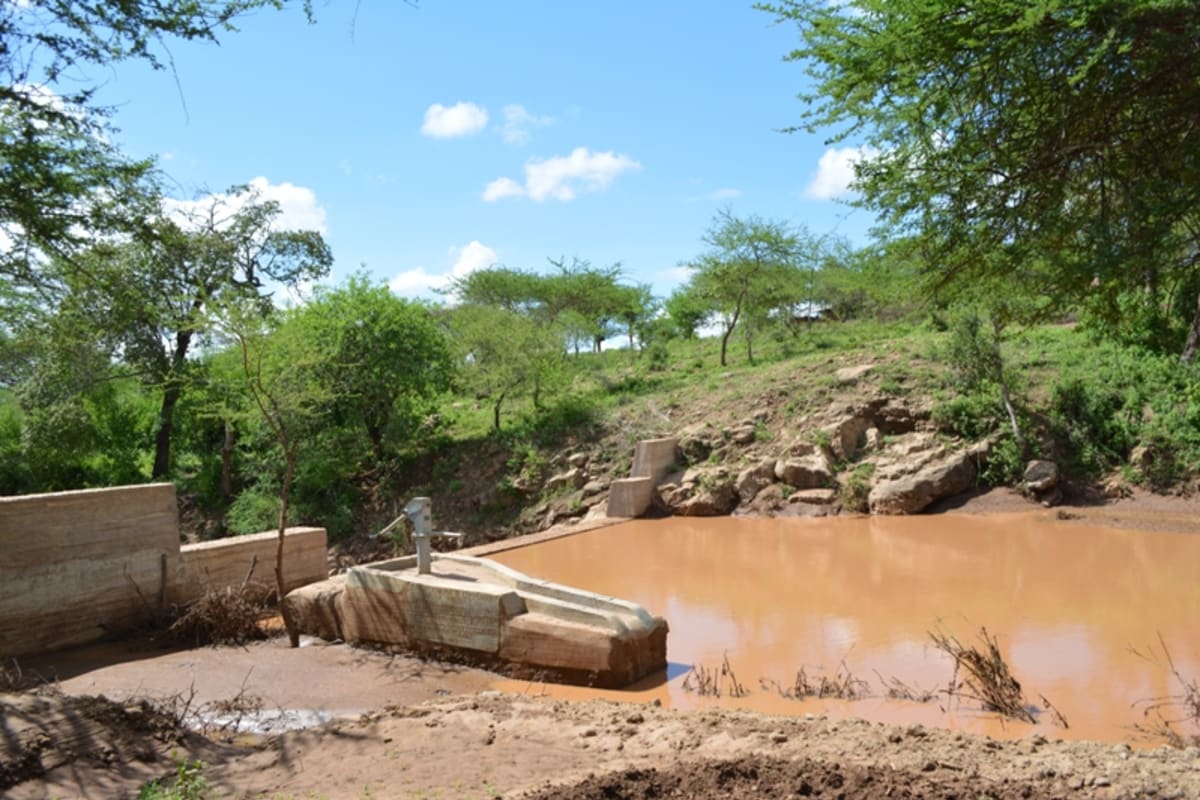This project is being implemented by our partner African Sand Dam Foundation, and includes the construction of a sand dam.
Background information
The group was formed in the year 2009. The group is located in Mavindinisub-location in Kathozweni district. The group has 22 members 8 men and 14 women The main challenges in the community are lack of potable water and soil erosion hence the members came together to find ways to alleviate this problems. The group had a merry go round, (internal savings and lending groups) which helped them in improving their socio- welfare affairs.
Economic activities
- Poultry keeping
- Farming
- Goat keeping
Challenges to development
Water insecurity
The main water sources in the area are River Kanyonga and River Thwake. River Kanyonga only has water during the rainy seasons. Mathangathi rock catchment is 5 kilometres away from the community and is strained by other large populations that surround it. This leads to very long queues in the dry season. From the rock catchment they buy water for five shillings. The river has continued to erode away and this has made the time that the water is available in the river channel to reduce from 6 months to less than 2 months. The alternative source of water is River Thwake which is 9 kilometres away and River Athi which is 12 km away. Water from river Athi does not dry up and communities prefer it during the dry seasons because they don’t have to queue to get water.
Due to the lack of water in the area:
- More time is spent in fetching water. Women spent most of their time fetching water in the dry season due long distance travelled.
- During the dry period of the year most of the farmers experience severe loss of livestock animals. This is because the animals lack water for drinking thus even they may go some days without water.
- Tree planting. The lack of water has led to drying up of trees that the farmers plant.
- Poor farming methods. Much of the time is spent in fetching water thus making them to neglect their farms because one is tired and cannot engage in any other productive role.
Crop Production
The area depends on rain fed agriculture. In the last four the area has not received rains thus leading to severe famine and food insecurity.
Other reasons to food insecurity:
- Poor fertile soils. The area has degraded soils due to erosion. Due to lack of terraces the crops do not yield well. Soil erosion has been attributed to overstocking and over grazing.
- Poor seed quality. They plant seeds that are not able to with stand the climate hence yield poorly hence less harvest. This because of unscrupulous dealers selling uncertified seeds.
- Poor farming practices. Their farms have not been terraced and when it rains there is usually soil erosion leaving the land bear.
- Pests and diseases. They affect their crops due to lack of knowledge controlling them and pesticides for spraying the crops.
- Late planting. Due to seed unavailability, because of prolonged famine and drought farmers do not have seeds to plant.
Main crops grown in the area
- Maize
- Cowpeas
- Green grams
- Sorghum
- Pigeon peas.
Environmental conservation
Water shortage in the area has led to the farmers not being able to grow trees. Termite infestation is another challenge to tree growing in the area. Other challenges to tree planting are lack of knowledge limiting them to grow the trees successfully and harsh weather conditions continue to lower their survival rates. Lack of trees has lead to shortage of firewood, which is the main source of firewood for most households. Women spent 2 hours in collecting firewood. The lack of trees has increased environmental degradation and lack of fodder for livestock.
By coming together they are hopeful that through sand dams and shallow wells they will be able to create water security in the area. Sand dams will improve the availability of water for farming and improve incomes.
The community plans to conserve soil through digging of terraces in areas affected by soil erosion
With water availability:
- The group income levels will increase. Through planting of vegetables and they will sell them and be able to get income.
- Tree program will not be a challenge as before due to sufficient water to water them.
- Water availability for our livestock. Our livestock will have enough water throughout the year and will no longer walk long distances thus improving their health and improving their milk production
JUSTIFICATION FOR NEW PROJECTS-SAND DAM PROJECT
For an area that heavily depends on livestock keeping as the main source of income, water security is key towards supporting this venture.
"When it stopped raining adequately we has to diversify to other activities that can support our families. Farming is the main source of income for hundreds of households in this area. However it has been three years since we harvested. That’s why we are keeping goats that we can sell and buy food during drought periods." Kakima B group secretary, Ruth Kyalo
The group has previously constructed two sand dams. The addition of a third sand dam will benefit the surrounding community at large and allow for further community development.
"We now have a growing water supply for drinking and domestic use. With a third dam we shall be able to have our livestock healthy and able to survive during the drought period. The available water isn’t enough for the animals and humans thus creating conflicts during the drought period." Ruth Kyalo.
 Sand Dam
Sand Dam
 Rehabilitation Project
Rehabilitation Project



















